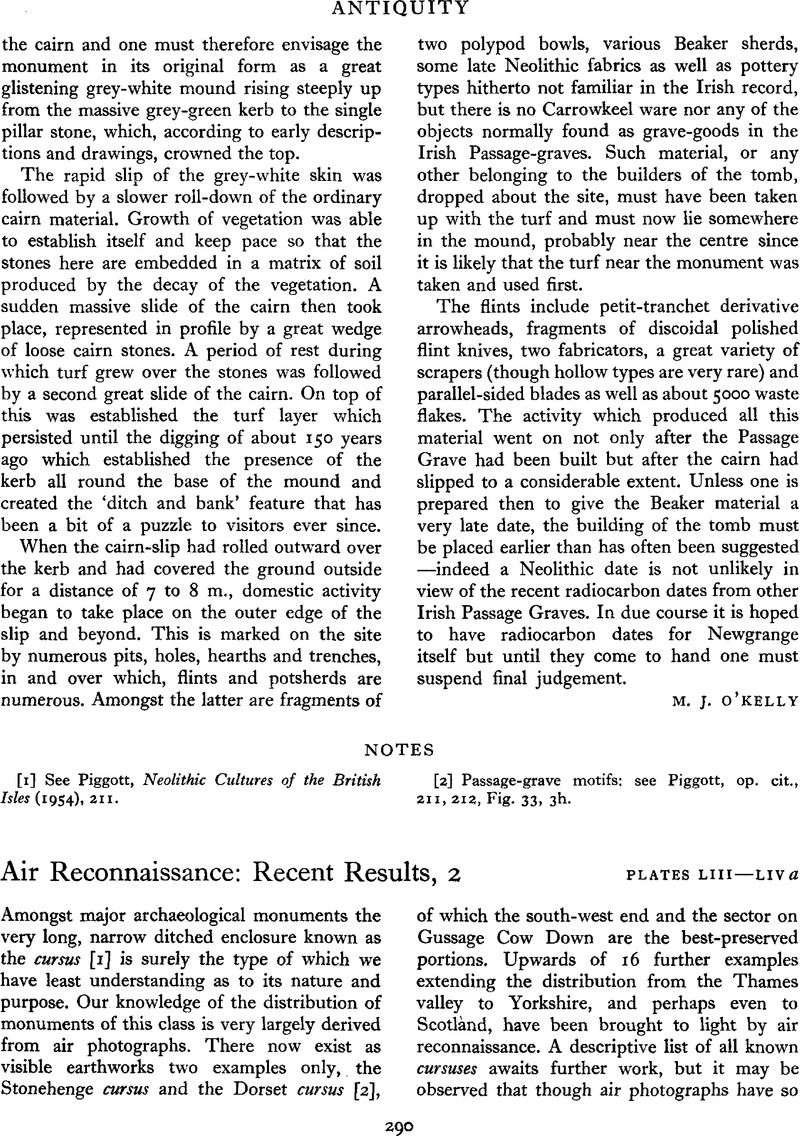Published online by Cambridge University Press: 26 May 2015

[1] The name is due to Stukeley: see the account of the Stonehenge cursus by Stone, J.F.S., Arch. J., 104, 1948, 7–19.Google Scholar
[2] Atkinson, R.J.C., ANTIQUITY, 1955, 4–9.CrossRefGoogle Scholar
[3] Leeds, E. T., Antiq. J., 14, 1934, 414–16.CrossRefGoogle Scholar
[4] See Leeds, op. cit., 415, pl. xix, and for a more recent photograph, St Joseph, J.K., Air Force Dept. J., 5, 1964. pl.B.Google Scholar
[5] Second Annual Report of the Cambridge Committee for Aerial Photography, Cambridge Univ. Reporter, 83, 1952–3, 874;Google Scholar Thomas, N., Yorks. Arch. J., 38, 1955, 427–32.Google Scholar
[6] St Joseph, J. K., ‘Air reconnaissance in Britain: some recent results’, Recent Archaeological Excavations in Britain, edited by Bruce-Mitford, R.L.S., 1956, 278, fig. 81.Google Scholar
[7] The cursus extends between the points TL 841673 and TL 831684.